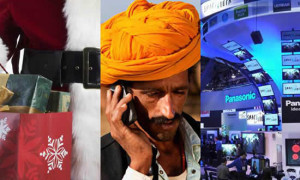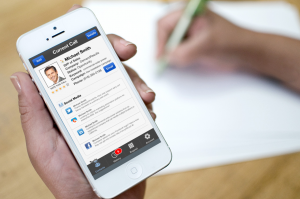3FER: Retail postmortem, emerging market adoption & smart socks

For the mobile world, 2015 took off with a boom. Still glowing after a strong holiday showing, mobile is becoming firmly entrenched in retail. For emerging market consumers, 2015 will be the Year of Mobile. And, post-CES, we’ll look at what will likely appear on your 2015 holiday gift list.
[br]
#1: Retail Holiday Postmortem & New Year Forecast
Holiday sales were up 3.9% over last year, but sales tied to mobile were up 27.2% and, according to IBM, accounted for 22.6% of all online sales. Smartphones and tablets were not only hot gifts – they also drove nearly half of all web traffic. Likely buoyed by these numbers, in 2015 retailers will continue to invest heavily in mobile – especially beacons and mobile messaging – to catch up with consumer behavior.
Here are some deeper takes on these numbers, some tech tips, and a taste of what to expect in 2015:
Holiday Retail Benchmark Report (IBM)
How Usage Of Retailer Mobile Apps Evolved In Holiday 2014 (Marketing Land)
Here’s how iBeacons can fit into the mobile customer’s buying journey (Venture Beat)
Kohl’s exec says beacons are surefire bet for greater personalization (Mobile Marketer)
Beacons Coming to the Apple Watch for Grocery Shopping (MediaPost)
[br]
#2: 2015 is the Year of Mobile in Emerging Markets
We’ve all heard the claims, again and again: This is mobile’s year! But while marketers largely waited for that great year to arrive, consumers saw it come and go, and most brands are still scrambling to catch up. Meanwhile, the innovators have moved on to emerging markets.
Thanks to a bevy of affordable smartphones, billions of consumers in China, India and many parts of Africa are entering the online world at an exceptional pace. By early 2016, India will have more smartphone users than the U.S.
With the numbers below, it’s no surprise why brands like Facebook, Tesco and Uber are battling for emerging-market consumers:
Mobile is eating the world (Andreeson Horowitz)
Mobile Internet Soars In Developing World (MediaPost)
Mobile becomes medium of choice for consumers in emerging markets (PitchonNet)
Global Mobile Marketers Need To Hone Strategies, Localization Efforts (MediaPost)
In India, Mobile Phone Use is the Elephant in the Room (MMW)
What Traversing Africa by Road Can Teach us about Technology, Community, and Impact (Ushahidi)
Can Uber make it in India? (Financial Times)
[br]
#3: CES was all about wearable tech
Much of what’s hawked at the Consumer Electronics Show will never hit the store shelves or make a dent in your Amazon shopping card anytime soon (if ever). That said, wearables made a big splash this year. Here are some standouts in the category:
Impecca Alert Band Wants To Stop Drivers Falling Asleep At The Wheel (Wearable World News)
VivaLnk shows wearable NFC thermometer (NFC World)
Hyundai’s smartwatch app points to growth of wearables in autos (Mobile Marketer)
These washable smart socks can reduce injuries from running (GigaOm)
Montblanc smartens traditional timepiece with wearable add-on (Luxury Daily)





